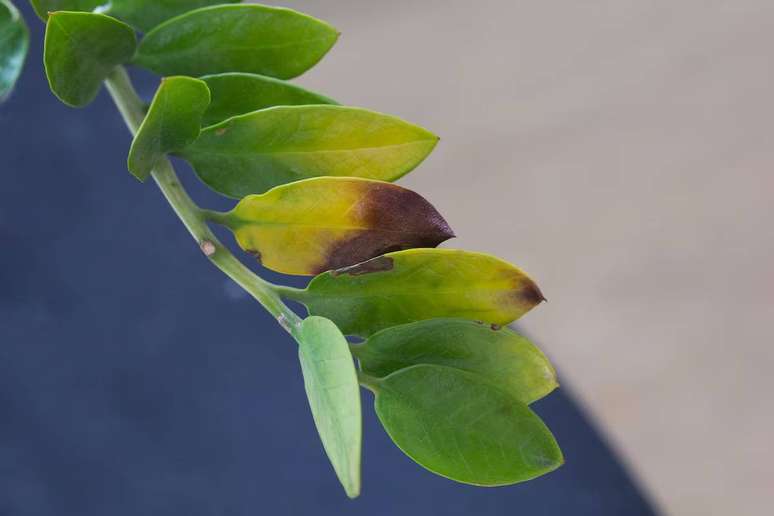The reasons vary, but they are easy to fix and can save the life of your plant; understand
Zamioculca, for those who take care of plants, is almost always a perfect purchase, since it does not require much care. The species, from the succulent family, has lush, green and shiny leaves. However, in some cases, branches and leaves begin to turn yellow for no apparent reason. Although the symptom seems simple, the cause of yellowing is varied.
In addition to being easy to maintain, the plant also has great spiritual significance, warding off negative energies and attracting good luck. Understand more about the meaning of succulent Here.
Why do zamioculca leaves turn yellow?
- Lack of water: One of the main reasons leaves turn yellow is lack of water. To check if this is the problem, you may need to get a little dirty: feeling the moisture in the soil and roots will help you diagnose whether the zamioculca needs more water.
- Excess water: Yellowing of zamioculca can also occur due to excess water, as it is a succulent that does not require constant watering. To prevent this from happening, the ideal is for the plant to have a draining layer and for watering to be carried out only when the soil is dry.
- Rooting: Another common problem among plant parents is rooting. It occurs when the species outgrows the pot it is in and the roots become strangled, causing yellowing due to stress. The problem is noticed when we move the soil a little and see very crowded roots. But don’t worry, the solution is to simply move the zamioculca to a larger space.
- Nutrient Deficiency: Even if the succulent plant is easy to maintain, it is necessary to pay attention to the lack or excess of nutrients available to the plant, which cause the yellowing of the leaves. It is a problem that does not occur very often, as the specimen easily survives with almost biannual fertilization, but it could be the case with your plant.
- Presence of parasites: Finally, another possible cause of yellowing leaves is the presence of parasites, such as mites, scale insects and ants. The diagnosis is simple and is usually resolved with a specific pesticide for plants. However, when using pesticides, special attention must be paid to pets, who can suffer poisoning when they come into contact with the plant.
* Intern under the supervision of Charlise Morais.
Source: Terra
Ben Stock is a lifestyle journalist and author at Gossipify. He writes about topics such as health, wellness, travel, food and home decor. He provides practical advice and inspiration to improve well-being, keeps readers up to date with latest lifestyle news and trends, known for his engaging writing style, in-depth analysis and unique perspectives.









